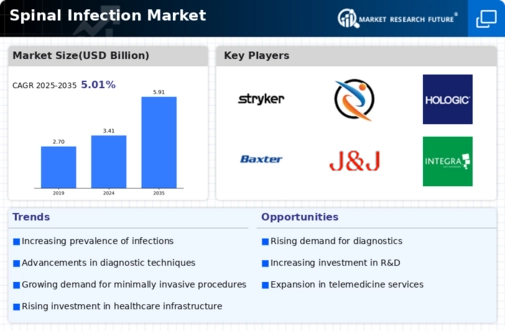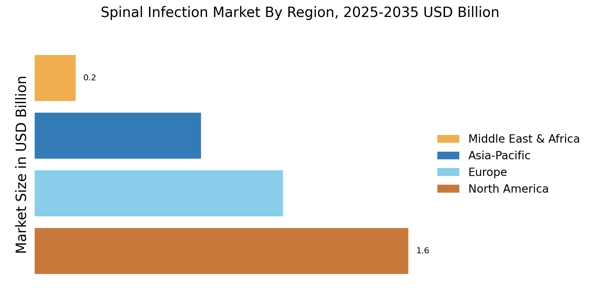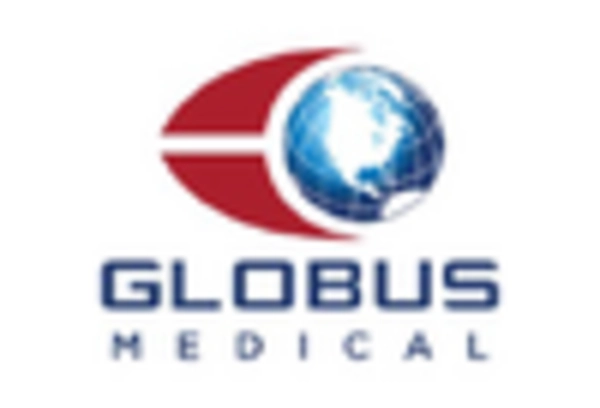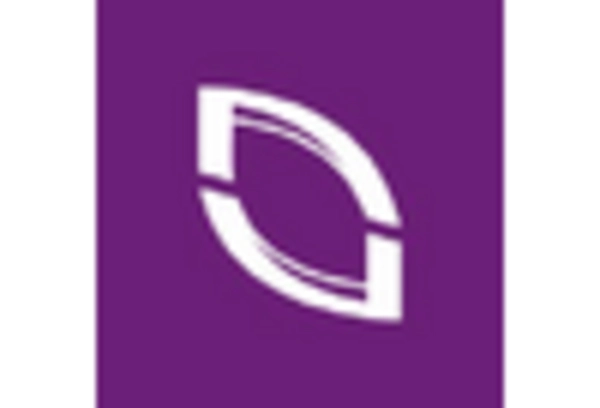Growing Awareness and Education
The rising awareness and education regarding spinal infections among healthcare professionals and the general public are pivotal drivers of the Spinal Infection Market. Educational initiatives aimed at improving knowledge about the symptoms and risks associated with spinal infections are gaining traction. This heightened awareness is likely to lead to earlier diagnosis and treatment, which is crucial for effective management. Market Research Future suggests that regions with robust educational programs have reported a 15% increase in early detection rates. As healthcare providers become more informed about the latest treatment protocols and diagnostic tools, the demand for these resources is expected to rise. This trend underscores the importance of continuous education in enhancing patient care and driving growth within the Spinal Infection Market.
Increase in Healthcare Expenditure
The escalation in healthcare expenditure across various regions is a significant driver of the Spinal Infection Market. Governments and private sectors are investing more in healthcare infrastructure, which includes the procurement of advanced diagnostic and treatment technologies for spinal infections. Recent statistics indicate that healthcare spending is projected to increase by 5% annually, reflecting a commitment to improving patient care. This financial investment facilitates the development and availability of innovative solutions, thereby enhancing treatment options for spinal infections. Additionally, increased funding for research initiatives is likely to yield new insights into effective management strategies. As healthcare systems evolve, the Spinal Infection Market is expected to benefit from this upward trend in expenditure, leading to improved patient outcomes and market growth.
Advancements in Treatment Modalities
Innovations in treatment modalities are significantly influencing the Spinal Infection Market. The development of novel antibiotics and antifungal agents has improved the management of spinal infections, leading to better patient outcomes. Furthermore, the introduction of advanced surgical techniques, such as endoscopic procedures, has revolutionized the treatment landscape. These advancements not only enhance the efficacy of treatments but also reduce recovery times for patients. Market data indicates that the surgical segment is projected to grow at a compound annual growth rate of 8% over the next five years. This growth is attributed to the increasing adoption of minimally invasive techniques, which are preferred due to their associated benefits. Consequently, the Spinal Infection Market is likely to witness a surge in demand for innovative treatment options that align with evolving patient needs.
Rising Incidence of Spinal Infections
The increasing prevalence of spinal infections is a primary driver of the Spinal Infection Market. Factors such as an aging population and the rise in chronic diseases contribute to this trend. According to recent data, the incidence of spinal infections has been observed to rise by approximately 10% annually. This surge necessitates enhanced diagnostic and therapeutic options, thereby propelling market growth. Healthcare providers are increasingly focusing on early detection and treatment strategies to mitigate complications associated with spinal infections. As a result, the demand for advanced medical technologies and treatment modalities is expected to escalate, further stimulating the Spinal Infection Market. The growing awareness among healthcare professionals regarding the importance of timely intervention is likely to enhance patient outcomes, thereby driving market expansion.
Rising Demand for Personalized Medicine
The growing emphasis on personalized medicine is emerging as a crucial driver of the Spinal Infection Market. Tailoring treatment approaches to individual patient profiles enhances the effectiveness of interventions for spinal infections. Recent advancements in genomics and biotechnology are facilitating the development of personalized therapies, which are gaining popularity among healthcare providers. Market analysis indicates that the personalized medicine segment is anticipated to grow at a rate of 7% over the next few years. This trend is likely to be fueled by the increasing recognition of the need for customized treatment plans that consider patient-specific factors. As the healthcare landscape shifts towards more individualized care, the Spinal Infection Market is poised to experience significant growth, driven by the demand for innovative and effective treatment solutions.


















Leave a Comment